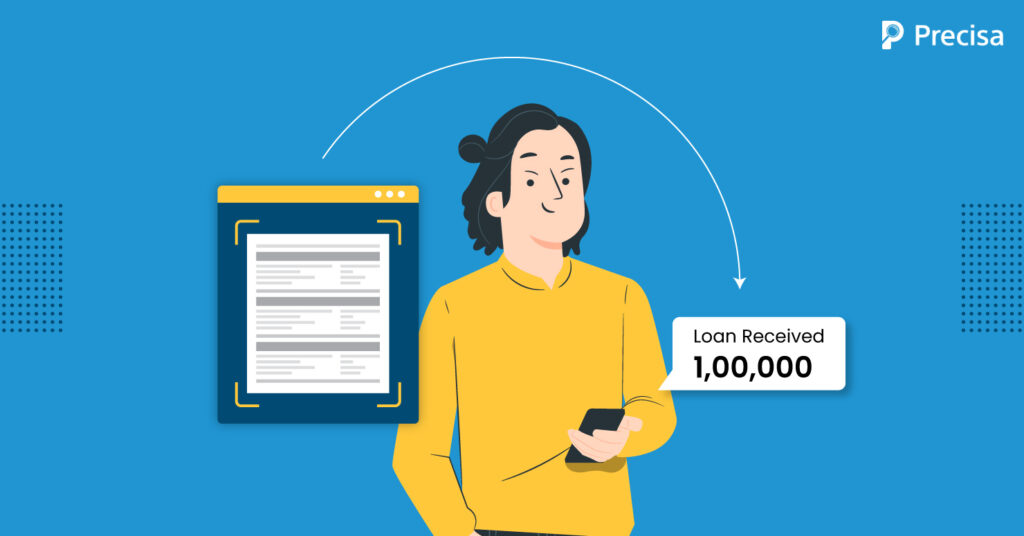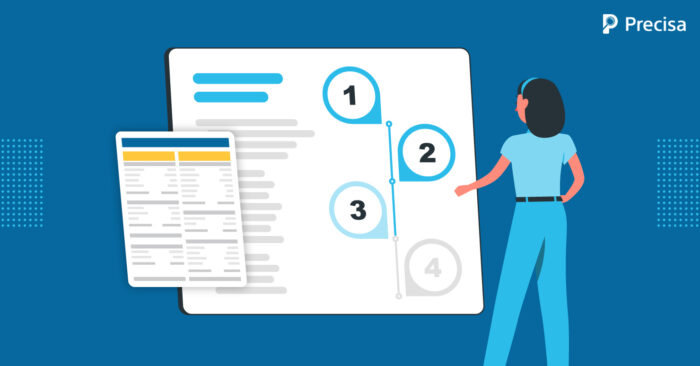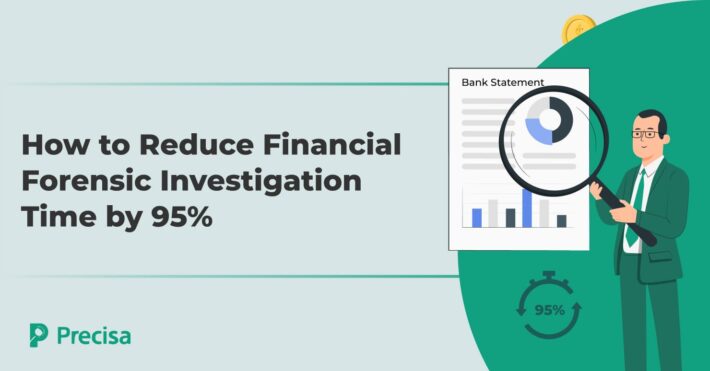Bank Statements for Loan Approval: Decoding the Complete Verification Process

In India, personal loans are often the linchpin that supports numerous aspirations, be it a dream wedding or a much-needed home renovation. Being unsecured in nature, these loans demand a coherent verification process. However, the traditional method of manual analysis is laborious, error-prone, and time-consuming.
While documentation requirements vary across institutions, one universal constant is the bank account statement. Lenders closely examine bank statements from many months or even years to understand a borrower’s savings, spending habits, and financial responsibilities.
The objective?
To determine the creditworthiness and the associated risks of granting a loan. In this article, we’ll demystify the intricate process of how lenders decode bank statements for loan approval.
In this blog post, we explore a detailed breakdown of the loan approval process.
Step-by-step Process of Verifying Bank Statements for Loan Approval
The entire verification process for bank statements for loan approval is designed to safeguard both parties—lenders and borrowers. It might seem a bit lengthy. But, it makes sure loans go to trustworthy and able borrowers. Let’s take a detailed look at the entire process.
1. Receiving the Loan Application
The journey begins with the bank receiving a loan application. An interested borrower can either physically visit the bank or initiate this process online, depending on the bank’s provisions.
2. Document Collection
The next step invariably involves the applicant submitting essential documents. This usually includes:
- Address proof
- Identity proof
- Income documents
- Completed loan application form
- Some passport-sized photographs
The applicants also need to provide their bank statements for loan approval. Lenders may request statements ranging from the last six months to several years. The applicant should submit statements from all main accounts for a complete analysis.
3. Document Verification
Once the documents are collected, they’re sent to the bank’s verification department. The bank/lenders usually take about 1 to 2 days to process. A representative might physically visit the borrower’s residence and workplace to validate the provided details.
Simultaneously, electronic verification of identity documents like PAN cards and Aadhaar is executed via online platforms.
4. Analysis of the Bank Statement for Loan Approval
The bank reviews these statements to learn about the applicant’s financial habits, steady income, and any warning signs. Many automated tools often help with this, giving fast and clear information.
Here’s a detailed process of how lenders usually analyse the bank statement for loan approval:
- Analysis of Income Streams: The primary concern for any lender is the borrower’s ability to repay. By assessing regular income inflows, be it from salaries, business income, or other sources, lenders gauge an applicant’s repayment capacity.
- Evaluation of Expenditure: By reviewing regular payments, monthly bills, and other costs, lenders can understand an applicant’s spending habits. It also gives insight into any existing financial commitments.
- Examination of Overdrafts and NSF Fees: Frequent overdrafts or Non-Sufficient Funds (NSF) fees are red flags. They indicate poor financial management and might stop lenders from giving a loan.
- Scrutiny of Large and Unusual Transactions: Any large or irregular deposits and withdrawals will be examined closely. Lenders search for steady financial habits. These transactions can show hidden debts or income.
- Monitoring Consistency with Application Data: Details provided in the loan application are cross-checked with the bank statement for loan approval. Discrepancies, if any, can affect the loan decision.
5. Calculation of Debt-to-Income Ratio
By comparing monthly debt obligations to monthly income, lenders compute the Debt-to-Income (DTI) ratio. A lower DTI is preferred as it indicates lesser financial stress on the borrower.
6. Verification Report Generation
Using the data gathered through verification, they craft a detailed report that captures their discoveries. It includes insights into:
- Applicant’s financial history
- Their financial stability
- Potential risks
The loan officer will then closely examine the report to decide whether to approve or reject the application.
7. Decisioning
If the verification proves satisfactory, the process moves forward. However, if discrepancies are found, or certain criteria are not met, the application might get rejected. The bank ensures that the reasons for rejection are clearly communicated to the borrower.
Innovative tools like Precisa, with their real-time bank statement analysis, offer a 360-degree view of the applicant’s financial health.
8. Sanctioning of Personal Loan
This is the final stretch. Once the loan officer gets a green signal from the verification team, the loan agreement is prepared. This document has all the details like:
- Terms and conditions
- Loan amount
- Tenure
- Interest rate
- Any additional charges
9. Loan Disbursal
Upon agreement, the bank moves swiftly to disburse the loan amount, which is typically reflected in the borrower’s bank account within 24 hours.
Final Thoughts
Personal loans are very popular in India and even abroad. So, if you’re planning to apply for loans, it’s good to keep the above steps of verifying bank statements for loan approval in mind.
The entire process might seem daunting. Yet, understanding this journey, from initial application to eventual disbursal, equips borrowers to prepare better.
As a cloud-based analytics platform, Precisa is changing the way we handle and view loans. It has a “Loans” tab that clearly lists all loan activities. You can see transaction details and start and end dates. You can also keep track of regular payments. If there are any missed payments, Precisa displays them in real time. Overall, it makes managing loans easier and keeps a clean financial record.
Redefine your approach with Precisa today!




